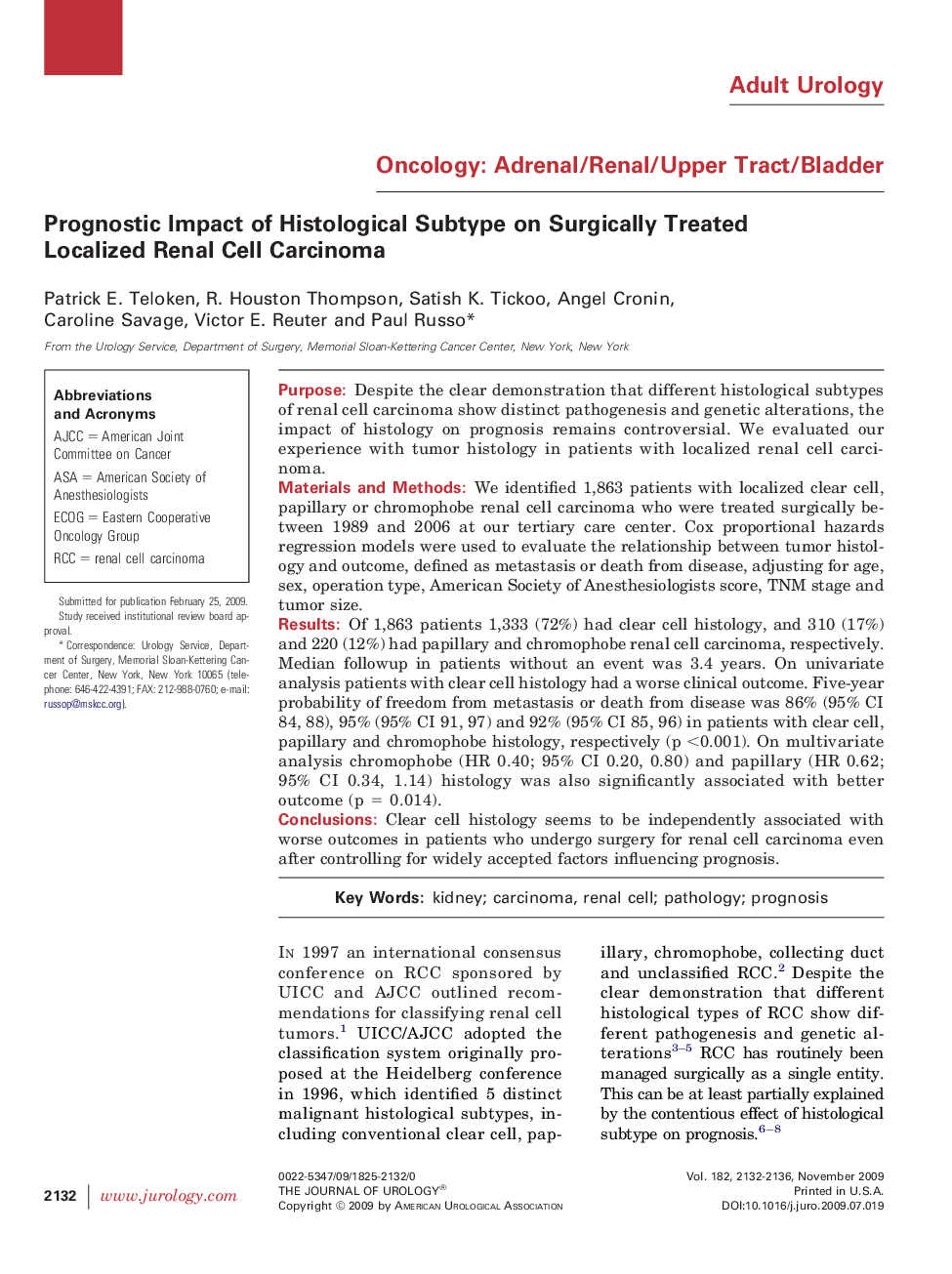| Article ID | Journal | Published Year | Pages | File Type |
|---|---|---|---|---|
| 3868276 | The Journal of Urology | 2009 | 5 Pages |
PurposeDespite the clear demonstration that different histological subtypes of renal cell carcinoma show distinct pathogenesis and genetic alterations, the impact of histology on prognosis remains controversial. We evaluated our experience with tumor histology in patients with localized renal cell carcinoma.Materials and MethodsWe identified 1,863 patients with localized clear cell, papillary or chromophobe renal cell carcinoma who were treated surgically between 1989 and 2006 at our tertiary care center. Cox proportional hazards regression models were used to evaluate the relationship between tumor histology and outcome, defined as metastasis or death from disease, adjusting for age, sex, operation type, American Society of Anesthesiologists score, TNM stage and tumor size.ResultsOf 1,863 patients 1,333 (72%) had clear cell histology, and 310 (17%) and 220 (12%) had papillary and chromophobe renal cell carcinoma, respectively. Median followup in patients without an event was 3.4 years. On univariate analysis patients with clear cell histology had a worse clinical outcome. Five-year probability of freedom from metastasis or death from disease was 86% (95% CI 84, 88), 95% (95% CI 91, 97) and 92% (95% CI 85, 96) in patients with clear cell, papillary and chromophobe histology, respectively (p <0.001). On multivariate analysis chromophobe (HR 0.40; 95% CI 0.20, 0.80) and papillary (HR 0.62; 95% CI 0.34, 1.14) histology was also significantly associated with better outcome (p = 0.014).ConclusionsClear cell histology seems to be independently associated with worse outcomes in patients who undergo surgery for renal cell carcinoma even after controlling for widely accepted factors influencing prognosis.
